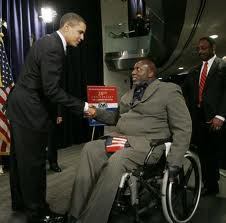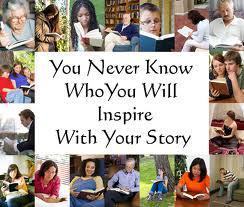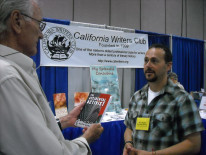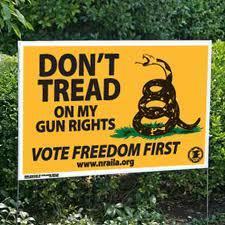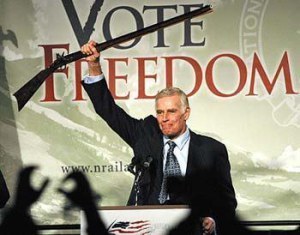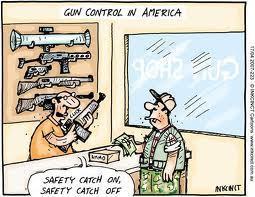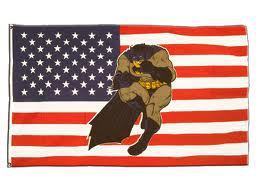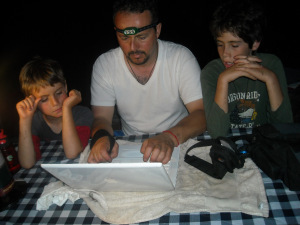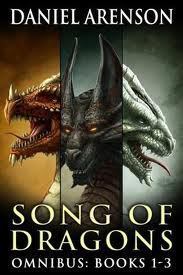Alon Shalev's Blog, page 34
August 7, 2012
High Speed Rail Funding Arrives. Has the Need Arrived?
Here in California, Governor Brown recently signed the first phase of High Speed Rail into reality. He likes HSR, but he was also in sort of a jam as California voters had previously (and only partially-informedly) approved a bond measure to raise billions of dollars specifically for this project. This money can’t legally be spent on anything else.
As fantasies go, HSR is pretty cool. France and Japan have enviable HSR systems that are really sexy. They look great, they zoom around majestically at impressive speeds, they lend an air of sophistication to their countries and governments, and they transport large numbers of people efficiently.

In addition, HSR would be more fuel efficient than air travel and it would break the strangle hold that the airlines currently have on us all. But is HSR a timely solution to our transportation problems?

Some people want to avoid this…
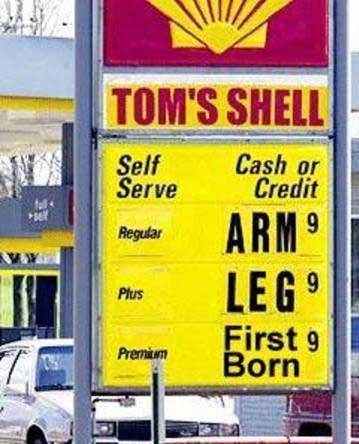
and this.
While pseudo-intellectuals like George Will rail against rail (especially but not exclusively the high-speed variety) for contrived and ridiculous reasons, there are better reasons – real reasons – that HSR is a solution whose time has not come. This first phase will run 130 miles, from Bakersfield to Madera (the proposed location of the states HSR maintenance facility) at a cost of $8billion.
What we really need to spend money on is improving and expanding existing public transportation systems. The real jewels of Asian and European rail systems are their frequency, extensiveness, and efficiency – not just from a fuel standpoint, but from a transportation standpoint as well.
In and around Tokyo, for example, there is an extensive train system in addition to subways and buses. The trains take millions (yes millions) of people into the city from outlying communities each day. There are multiple tracks almost everywhere and, unlike the San Francisco Bay Area’s BART system, you can travel in several different directions from almost anywhere.
Tokyo’s passenger train system is almost all electric and very quiet. The trains resemble nice subways more than they do Amtrak trains. One of the best things about having multiple tracks is that it allows for express trains. These trains are the same as the other trains, they are not built for higher speeds. But they are much faster because they have limited stops and just sail right past many stations.
Because of this, these express trains get their passengers to their destinations much sooner. A passenger may have to transfer to another, local train to make it to a final destination, but it’s still much quicker than stopping at every station along the way.
Here’s another issue. Right now, Amtrak (America’s only real large-scale rail system) has large, conspicuous gaps in it’s travel coverage. For example, to travel on Amtrak from Fresno, California’s agriculture center, to Los Angeles requires that passengers get off of the train at Bakersfield and board a bus for the rest of the trip.
In addition, local light rail and bus systems are riddled with inadequacies, many of which are caused by limited funding and some of which are caused by less-than-optimal management. Part of the new funding is to make unspecified improvements in California’s existing rail systems, but the attention and the priority seem to be on HSR.
All of these systems could be improved tremendously for a lower cost than constructing one thin route for high speed rail between various locations. Also, these solutions apply to real problems today. What people need is help with their everyday commutes and business and errand trips. How many people really need to get from Los Angeles to San Francisco in 2 ½ hours? Many, many more people would benefit from the ability to get to work in under one hour.
High speed rail is a later phase in a mature public transportation system. Our system is far from mature and HSR is not the solution we need now.
-Tom Rossi
___________________________________________________________________________
Tom Rossi is a commentator on politics and social issues. He is a Ph.D. student in International Sustainable Development, concentrating in natural resource and economic policy. Tom greatly enjoys a hearty debate, especially over a hearty pint of Guinness.
___________________________________________________________________________

August 6, 2012
It is Time – Relief for Victims of Lone-Wolf Killers such as James Holmes – Guest Blogger Lloyd Lofthouse
Alon: Last week’s post garnered a lot of attention - Who’s Afraid of the NRA - Guest Blogger Lloyd Lofthouse redirects our attention from the political outcomes to focusing on the victims.
It is Time – Relief for Victims of Lone-Wolf Killers such as James Holmes – LLoyd Lofthouse
What happened in that theater outside Denver, Colorado on July 25, 2012 or, for example, the terrorist bomb attack on the Alfred P. Murray Federal Building in Downtown Oklahoma City on April 19, 1995, were acts of terrorism and/or combat no different from what happened on 9/11 or in America’s foreign wars such as Vietnam, Iraq and Afghanistan.
In fact, twelve days after 9/11, the US Congress enacted the September 11th Victim Compensation fund of 2001. This $6 billion program was intended to compensate any individual (or the personal representative of a deceased individual) who was physically injured or killed as a result of the terrorist attacks on September 11, 2011. Source: Homeland Security: 9/11 Victim Relief Funds
We already know what happens to America’s combat veterans in similar situations—and US troops are trained, armed and ready.
In July 2010, PBS News Hour reported, “Of the more than two million men and women who served in Afghanistan and Iraq, it’s estimated one in five will come home with post-traumatic stress disorder or PTSD,” said health correspondent Betty Ann Bowser.
Bowser quoted U. S. President Barack Obama, who said, “I don’t think our troops on the battlefield should have to keep notes just in case they need to apply for a claim. And I have met enough veterans to know that you don’t have to engage in a firefight to endure the trauma of war.”
Before President Obama, the rules required veterans to document events like firefights or bomb explosions that could have caused PTSD. Such documentation was often time-consuming and difficult, and sometimes was impossible. … Under the new rules a veteran need show only that he or she served in a war and performed a job during which events could have happened that could cause the disorder.
But what about the innocent victims of combat in the United States?
I’m not talking about the homicide rate (which is in decline) or riots (which most people may avoid by staying away from the location of the riot). I’m talking about the victims of lone-wolf mass killings such as what happened recently near Denver, Colorado.
What Motivates “Lone-Wolf” Shooters – there are thousands hiding in public!
According to The Arizona Republic, “There has been no corresponding decline in mass murder—these sudden, stunning eruptions of violence with multiple victims, often perpetrated by gunmen who researchers refer to as ‘pseudo-commandos.’ Such a killer, clad in body armor and with a small arsenal of firearms, struck Friday in Aurora, Colo., leaving a dozen dead, 58 wounded and a nation horrified. …
“The United States experienced 645 mass-murder events—killings with at least four victims—from 1976 to 2010, according to Northeastern University criminologist James Alan Fox. When graphed, these incidents show no obvious trend. The numbers go up and down and up again. The total body count: 2,949.”
The total number killed in the terrorist attack in New York City on September 11, 2001 was 2,819.
If what happened in that Colorado Theater does not qualify as a homegrown terrorist attack by a ‘pseudo-commando’, what does?
Lone-wolf acts of violence in the United States must be considered the same as any disaster and be included under the Robert T. Stafford Disaster Relief and Emergency Assistance Act of 1988. Under this act, the Federal share of the costs of such efforts is to be no less than 75 percent of the eligible costs. Total assistance under this Act for one emergency is to be limited to no more than $5,000,000, except when the President determines additional funds are needed. If additional funds are needed, the President must report to Congress on the extent of the additional need.
If what happened in Colorado is not covered under the Stafford Act, we need a new law that will. After all, it is the government’s responsibility to safeguard innocent, law abiding US citizens and in acts of lone-wolf violence, the government has failed 645 times since 1976.
It’s time to take care of our own in situations such as a lone-wolf mass-murder events. If the US Federal government can spend $49 billion for foreign aid in 2012, it must help the victims of acts of violence similar to what happened in Colorado in that Century Theater—the victims in such acts of violence should be treated the same as if they were 9/11 victims, wounded in combat or came home with PTSD from Vietnam, Iraq or Afghanistan.
This post is reprinted with permission from The Soulful Veteran
——————————————————————————————————
Alon Shalev is the author of The Accidental Activist and A Gardener’s Tale. He is the Executive Director of the San Francisco Hillel Foundation, a non-profit that provides spiritual and social justice opportunities to Jewish students in the Bay Area. More on Alon Shalev at http://www.alonshalev.com/ and on Twitter (@alonshalevsf).

August 3, 2012
Defining the Genre – Transformational What?
This weekend I was asked me what genre I write. I replied: “Transformational fiction.”
“What’s that?”
I was asking for it, since I have adopted a phrase I heard from the presenter of a workshop at the Santa Barbara Writers Conference.
“I write about change – people who want to help change the world and in doing so experience a change in themselves.”
I began to explain about the books I have published and in process. In A Gardener’s Tale, the mysterious protagonist empowers a young outcast to transform into an important member of the community. In The Accidental Activist, my main character is not one of the activists sued by the oil company, but a self absorbed computer programmer who takes up the struggle against the multinational in order to get laid (well kind of), but discovers that he can harness his talents to help improve the world.
I have written three other manuscripts and, in each, the protagonist goes through a deep transformation. As I wrote my novels, I never realized that this was a common theme until The Accidental Activist was being critiqued.
The discussion progressed into which social causes we each work for, and what organizations we are involved with. When we finished, I felt that he wanted to buy my book because of his newly formed connection with me. Best of all, I never felt as though I was trying to sell him anything. I was being me and, passionate as I am about social injustices, I was being genuine.
Brian Judd, a book marketing specialist, recalled in a recent CreateSpace webinar a man who had written a children’s book about bananas. He would dress up as a banana, which naturally became a talking point.I have tried to dress up my website fit that transformational flavor: the Richard Wright quote, the request to purchase my book at an independent bookstore and showcasing non profits and causes that I support.
This urge to advance a persona behind the book and author feels right. It wouldn’t work if it wasn’t genuine, but since I have been a political activist and community organizer (no I’m not announcing my candidacy for President) for most of my life, it fits.
And so I will go out into the world and introduce myself: Alon Shalev. I write transformational fiction. And maybe one day, the person I am being introduced to won’t respond: “Transformational fiction – what’s that?”
Maybe one day they will even say: “Alon Shalev? Yeah I read your novels. One inspired me to…”
——————————————————————————————————
Alon Shalev is the author of The Accidental Activist and A Gardener’s Tale. He is the Executive Director of the San Francisco Hillel Foundation, a non-profit that provides spiritual and social justice opportunities to Jewish students in the Bay Area. More on Alon Shalev at http://www.alonshalev.com/ and on Twitter (@alonshalevsf).

August 2, 2012
Hypermiling App – Roger Ingalls
Out of necessity, I’ve become a hypermiler. I am now commuting up to seventy miles a day in a 5,000 pound Ford F250 pickup truck powered by a V10 engine. In the city, I get approximately 11 miles per gallon and about 13 on the highway. It’s safe to say this vehicle is not a gas hog; it’s a fuel sucking Tyrannosaurus rex.
Hypermiling is the practice of driving using techniques that maximize fuel economy. Those using these techniques are referred to as hypermilers. It gained popularity as a result of the rise in gasoline prices during the late 2000s. A month ago I was getting about 380 miles per tank of gas but now I’m hitting close to 470 miles. As a former racecar driver, it is difficult for me to drive in a manner that conserves energy over distance; my instinct is to save time over distance. I’m learning that it takes a lot of awareness and concentration to optimize fuel efficiency.
With all the computers now in our vehicles and in the smart phones we carry, where is the app that can help me hypermile? These devices have GPS and accelerometers so they should be able to coach us with voices commands and advice. Examples: 1) “Given the speed limit on this road, you are accelerating too fast, back off the gas pedal, 2) “The next traffic light will turn red in 5 seconds, left off the gas pedal and coast”, or 3) “the next two traffic lights will stay green for 45 seconds, increase speed to 5 miles per hour over the limit to avoid breaking for a red light”.
All the technology exists to help us save millions of gallons of fuel per day across the country. We just need to apply it in a smart way.

August 1, 2012
Who’s Afraid of the NRA?
I’m stuck on the topic of arms control. In the massive news coverage that surrounded the tragic shooting rampage in Colorado, I heard one comment repeated at least three times by different reporters and commentators. It went something along the lines of: “No presidential candidate would dare take on the National Rifle Association (NRA) during an election year” with one pundit suggesting that no elected president would either.
I am a great believer in pressure groups to protect our rights and advocate in an orderly and effective fashion. Being relatively new to the US (and I feel it politically when gun control is being discussed more than most other topics), I am not aware of the power of the NRA.
Their website is very impressive. They have launched a campaign to “Go All In’ as they actively push to get their members voting for their people at the polls. Now my stereotype of an NRA member has them firmly committed to heading to the polls in November, but it does look to be a slick campaign.
There is nothing wrong with that, by the way. This is a democracy and there are more than a few nonprofits that I support who could learn a lot from the NRA. Their page on the ‘Right To Carry’ laws looks very professional.
But it seems to be more than that. The NRA succeed by embracing two marketing principles: Their message is simple and it is repeated, repeated, repeated. Craig Montuori, apparently a left coaster himself sums up the messaging:
“The NRA boils issues down to one point–pro- or anti-gun–and takes a stand for the pro-gun side. Sometimes these issues are extremely complex. For example, gun trace data takes ballistic data from criminal cases, matches them to a gun, and matches that gun to a dealer. Then, the dealer can be checked out for whether or not they’re following proper sales procedure–background checks, hold periods, and the like, and oftentimes, the dealers do not. The NRA opposes this to the hilt, and annually, the Tiarht Amendment is proposed and adopted with their heavy lobbying support to restrict gun trace data from being used by police and the ATF to dry up criminals’ gun supply. The issue is boiled down to “restricting gun sales = bad, NRA oppose bad restrictions.”
Mr. Montuori then goes on to explain how the NRA has an effective direct mail campaign (and probably online as well) to swamp legislators with letters from the NRA’s huge membership list, giving the politician the clear message that s/he is going against a large number of his/her constituents. Now what politician doesn’t listen to this sophisticated message?
Members sign and mail prepaid issue cards telling their representatives that they oppose H.R. ____ that will restrict their 2nd Amendment Rights. They invariably warn the representative that they will oppose him/her if s/he doesn’t oppose the bill too.
Again Mr. Montuori: “Because the issue is so ‘hot,’ the NRA has an oversized effect on Congressional races, and many Members toe the NRA line to keep their support and avoid their opposition, further enhancing their lobbying chops.”
Mr. Montuori’s final point is that the NRA have such a huge membership and are very efficient at mobilizing and fundraising quickly. Given the emotional sensitivity surrounding the issue … “among certain American sub-cultures, especially in the South, and supposed threats to those rights can whip up a huge frenzy of feeling that is effectively exploited to raise large amounts of cash.”
In truth, I preferred him as Moses
While I have no doubt that this is so true, I am still left with the feeling that Presidential candidates also have a professional network, huge supporters and plenty of money. I am left with the nagging question: Why are even those at the very top scared of taking on the NRA?
Your opinion?
——————————————————————————————————
Alon Shalev is the author of The Accidental Activist and A Gardener’s Tale. He is the Executive Director of the San Francisco Hillel Foundation, a non-profit that provides spiritual and social justice opportunities to Jewish students in the Bay Area. More on Alon Shalev at http://www.alonshalev.com/ and on Twitter (@alonshalevsf).

July 31, 2012
Olympic Extravaganza
The extravaganza has officially jumped the shark.
My wife sat through the opening ceremony for the 2012 Summer Olympics on Friday night. I watched about half of it. About all I could take was a couple of minutes before I went to check email, the refrigerator, or to see if Jodie, my long time house ghost was OK.
How low we’ve sunk. This extravaganza thing has been growing like the 2006 bubbled up housing market for the last few years and it’s finally popped. I’m so tired of contrived choreography and costumes whose continuing attempts to be shocking are only satires of themselves.
My wife wanted to watch the athletes march around the field. She’s from Denmark and wanted to see the Danish team, for one thing. I remember when I was a kid, totally enraptured by the Olympic Games, watching the athletes enter the stadium. Somehow they showed both humility and pride at the same time. These people have worked incredibly hard to get to these games.
For many of them, this is the absolute pinnacle of achievement in their sports as there’s not much potential to compete professionally in canoe sprinting (as far as I know). This event is about those athletes and about nations coming together and putting aside the politics and competing peacefully.
We were watching a rerun, essentially, as London is eight hours ahead of us. In order to make it work for TV, including maximizing the audience and making the fireworks and light shows work, the actual event took place from about 9pm to 1am, London time. The extravaganza came first, of course, leaving the athletes entrance march until after 11pm. Many of the athletes didn’t want to stay up so late because they had competitions early the next morning. The result was that we saw some fraction of each team in the parade.
This robbed both the athletes and their fans of a big moment. In fact, many of the fans in the stadium got up and left before the event was over. All this for one of the most boring, self-indulgent shows I’ve ever seen. People in silly costumes just danced around and waved their arms endlessly. They were telling the story of the evolution of England – apparently in real-time. It had nothing to do with sports or the Olympics themselves.
[image error]
But this has become the norm. Everywhere I look, these days, there’s another extravaganza. So many that it’s just plain boring. The English spent $85 million on this turkey – money that could have gone a long way toward alleviating the “worst quality of life in Europe,” as has been said of England.
I say the day of the extravaganza is seeing its sunset. The level of hype for events can’t really get any higher. The hype is so extreme that it’s lost its meaning. You’d think that drinking a can of cola or light beer is going to bring about the world’s biggest party and the Rolling Stones are going to play there. Words like “amazing” have no meaning whatsoever, anymore, because EVERYTHING and EVERYONE is amazing. I’ve heard that word at least five hundred times in the past year.

I’m tired of hype. I’m tired of commercial exaggeration. I’m tired of the extravaganza. I know when something’s great. I know when I’m anticipating something. I don’t need to be told how to feel. Can we move on? I’m ready for the next thing.
By the way, I’ve drunk thousands (maybe millions?) of beers in my life and half of them were actually really good (some people are wine snobs, I’m a beer snob. Sue me). But I’m still waiting on Mick Jagger. Maybe I still haven’t drunk the right brand.
-Tom Rossi
___________________________________________________________________________
Tom Rossi is a commentator on politics and social issues. He is a Ph.D. student in International Sustainable Development, concentrating in natural resource and economic policy. Tom greatly enjoys a hearty debate, especially over a hearty pint of Guinness.
___________________________________________________________________________

July 30, 2012
Back to Gun Control … Inevitably
I waited to post this one out of respect for the victims though I wrote it over that terrible weekend. My thoughts go out to those who lost loved ones in the theatre shooting in Colorado. I cannot imagine what you are experiencing and I won’t pretend to.
I also feel kind of foolish and guilty, and I am sure that I am not the only one. When do we take on the issue of gun control? After a tragedy. After innocent people doing something that we all do regularly and are horrifically struck down. But once the victims are buried and their survivors have vented, we move on.
Until the next time…
Last time I broached the topic of gun control, I was told by several people that it is fundamentally an American issue and that, try as I do to be as American, it is impossible for an ‘outsider’ to understand how deeply this cuts into Uncle Sam’s psyche.
America is the land of the free. We all agree on this, right? We all want a government that takes care of big issues such as law and order, and defense of the realm. We simply don’t agree where to draw the line and who foots the bill.
Having the right to bear arms is for many the symbol of freedom. For me, the issue is not so clear-cut. I have sympathy with the woman who shot a man who was breaking down her front door and clearly threatening to rape her and kill her baby. So did the 911-dispatcher when she realized no one was going to get to the woman’s aid in time. I imagine that anyone who heard the tapes of the phone call understand this scenario.
To have the ability to defend herself, this woman needed to be able to legally able to buy a gun and ammunition. If this is the mission of the NRA and its supporters, it sounds reasonable.
But this is a long way away from the ability to purchase, in full view of traceable data, stacks of guns, ammunition, and explosives. There is a line that must be drawn not just between who has the right to purchase a gun and who doesn’t, but what they are allowed to possess. It should only be enough to defend yourself and your family against an assailant.
There is a colleague in my writers group who has written a post-apocalyptical novel based in the Bay Area. I am not familiar with the genre, but the story has stuck with me. This is in part because the story is taking place in my backyard, but it is also that my friend has researched his weapons and doesn’t spare us the graphics.
As he lists the various stockpiles that the good and bad guys amass, I realize that this is based upon the premise that there are enough people out there (in our backyards) who are amassing arsenals of weapons.
Would putting limits on how many weapons a person can have really impinge upon our freedom? Would America no longer be free if the bad guys packed less weaponry than our own police?
And what kind of freedom do we really have when we are too scared to go to the movies…and watch a superhero battle crime?
——————————————————————————————————
Alon Shalev is the author of The Accidental Activist and A Gardener’s Tale. He is the Executive Director of the San Francisco Hillel Foundation, a non-profit that provides spiritual and social justice opportunities to Jewish students in the Bay Area. More on Alon Shalev at http://www.alonshalev.com/ and on Twitter (@alonshalevsf).

July 27, 2012
Turn Write At The Next Junction
Family vacations are always special for my little clan. Once a year, we pack up our considerable collection of camping gear and head to the mountains, lakes and redwoods. Without Internet and electricity, we have no choice but to hike, fish, and enjoy beautiful Northern California and Oregon, and each other. This year there were two highlights. We all followed my eldest’s passion for archery and it has hopefully become a family hobby.
Two years ago. I wrote the first Wycaan Master book together with my eldest son. I have blogged about this previously. Last year, I wrote the second book before we went away and each night, we sat around the campfire or snuggled in my tent as I read to them a few chapters at a time.
This year, we followed suit, reading the third book of the series. Everyday I waited with anticipation to read and treasured their responses. As the books have become more intricate, my youngest (now 9 years old) sometimes had a hard time following and peppered me with questions, often later that night when he was supposed to sleep, or the next day in the middle of another activity.
Now I know that family are not supposed to be considered as impartial critics. In truth, they had a lot of constructive criticism and suggestions, most of which I adopted. But I cannot imagine enjoying the level of engagement that they experienced and expressed from anyone else.
Back in the Bay Area and it is time to make major decisions. There is time as I outsource the books for some professional editing, but I am considering alternative options to publish the series.
A fascinating conversation with a representative at a publishing house with a long history of epic fantasy titles has left me wondering how long to walk the traditional path. She told me that they spent considerable time discussing the option of signing me even though they had previously made a business decision to stop publishing in this genre. It just doesn’t make business sense in the current economic climate, she told me. It has nothing to do with the quality of your work.
I feel a degree of frustration as I have been watching other fantasy authors and their respectable and consistent ranking on Amazon.com. Daniel Arenson, who is the author of the Requiem series and others, announced the following at the end of June:
“100,000 books sold. Bloody hell. You bought 100,000 of these silly books about dragons, swords, and spells. You’re nuts. But THANK YOU, readers. It’s been a crazy ride.”
I have no doubt that Mr. Arenson worked extremely hard to get to this significant landmark. He wrote great books and went out and did it by himself.
I congratulate him…and wonder.
——————————————————————————————————
Alon Shalev is the author of The Accidental Activist and A Gardener’s Tale. He is the Executive Director of the San Francisco Hillel Foundation, a non-profit that provides spiritual and social justice opportunities to Jewish students in the Bay Area. More on Alon Shalev at http://www.alonshalev.com/ and on Twitter (@alonshalevsf).

July 26, 2012
Gun Control: Kill the Handgun – Roger Ingalls
In the wake of the shooting deaths in Aurora, Colorado, the roar to ban assault rifles can be heard all over the country. The President made a soft but responsible comment on the issue while Senator Feinstein was more direct.
Obama at the National Urban League: “I, like most Americans, believe that the Second Amendment guarantees an individual the right to bear arms, I think we recognize the traditions of gun ownership that passed on from generation to generation. That hunting and shooting are part of a cherished national heritage but I also believe that a lot of gun owners would agree that AK-47s belong in the hands of soldiers, not in the hands of criminals. That they belong on the battlefield of war, not on the streets of our cities. I believe the majority of gun owners would agree we should do everything possible to prevent criminals and fugitives from purchasing weapons, and we should check someone’s criminal record before they can check out a gun seller.”
Senator Feinstein: “Weapons of war don’t belong on the streets. This is a powerful weapon, it had a 100-round drum; this is a man who planned, who went in, and his purpose was to kill as many people as he could in a sold-out theater. We’ve got to really sit down and come to grips with what is sold to the average citizen in America. I have no problem with people being licensed to buy a firearm, but these are weapons that are only going to be used to kill a lot of people in close combat.”
I am a firm believer in the Second Amendment – commonly referred to as “the right to bear arms”. The Second Amendment text: A well regulated militia being necessary to the security of a free state, the right of the people to keep and bear arms shall not be infringed. The amendment was provided for the purpose of deterring tyrannical government, repelling invasion, suppressing insurrection, facilitating a natural right of self-defense and enabling the people to organize a militia system.
If assault rifles are banned we’ll be left with hunting guns and handguns and we would then be out of compliance with the intent of the Second Amendment.
Guns kill approximately 30,000 people in the United States, per year, and less than 0.5% of those killed die from assault rifles. The political and media assault on assault rifles is way off target.
As defined in The Bill of Rights and in the context of the time in which it was written, I do not believe the Second Amendment guarantees the public the right to own or bear hand guns. Hand guns DO NOT satisfy the intended purpose of the amendment. You cannot deter a tyrannical government or organize a militia with hand guns. I DO believe the public has the right to bear rifles, assault weapons and any equipment used by the military and government. This may be controversial but it is the true intent of the amendment.
Assault weapons make big headline when used for murder but they kill a fraction of the people relative to other weapons. Hand guns are designed for convenient and surprise killing at close proximity which is completely incompatible with the Second Amendment.
If politicians and mainstream media want to focus on a real problem without violating the Constitution, they should kill the handgun.

July 25, 2012
A Repeat of Agent Orange in America's Heartland?
 Reblogged from The Soulful Veteran's Blog:
Reblogged from The Soulful Veteran's Blog:

An e-mail arrived this morning from the “Marine Corps Vietnam Tankers Historical Foundation”. I signed up for this news feed because I served in the First Tank Battalion, First Marine Division in Okinawa and then Vietnam in 1965-1966.
The title of the e-mail speaks volumes about America’s political priorities when measured between health of the environment and the individual and corporate profits.
Following on from Monday's post, I would like to share this thoughtful post from The Soulful Veteran.



